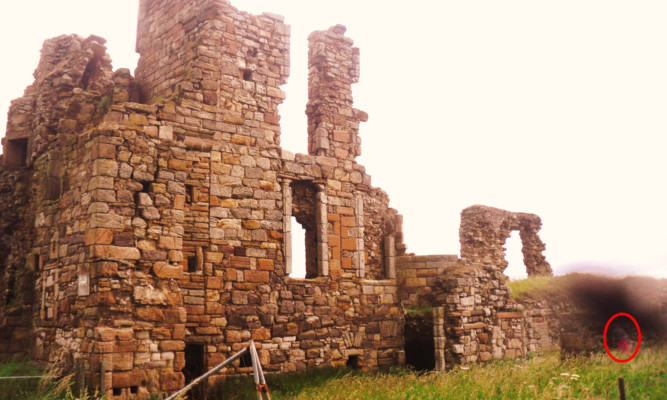A paranormal investigator and historian believes he may have captured the ghost of an East Neuk fisherwoman on camera.
Leven man Lenny Low, author of The Weem Witch, was taking some photos around Newark Castle, St Monans, for a forthcoming book when he captured the image.
He said: “I have a book in production about the history of this area and needed some extra shots.
“It was overcast with the sun peeking through. My partner, Ruth Sinclair-Case, went ahead with our dog and was out of sight, looking at the stairs inside the building.
“I took several shots with a Samsung 12.2 pixel camera. When looking at the photos one has a strange, dark blemish in the right-hand corner. Zoom in and this character appears, walking into what would be the pantry storeroom of the castle. It looks like how the fisherwomen of old dressed.”
“The doorway it’s walking into is fenced off but was the storeroom of the castle, the kitchen is next door, on the left.
“It looks like a woman with her sleeves rolled up in a busy-like manner. Being 100 yards from the sea, its more likely to be a fisherman’s wife one who spent her time gutting and salting the fish.”
Newark Castle is a ruin located just outside St Monans. Building on the site probably dates back to the 13th Century, at which time the Scottish king, Alexander III, spent some of his childhood there.
Since that time, the site has passed through several rebuilding phases and it is most likely that the ruins currently visible are the remains of buildings constructed under the ownership of David Leslie in the 17th Century and the Sandilands family who owned the castle since the 15th Century, when they gained the estate through marriage.
Leslie was a prominent figure in the English and Scottish Civil Wars, becoming Lord Newark after the wars.
Mr Low’s St Monans book is due out next year.
